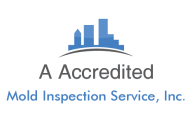Toxic Mold in Food
The typical mold problem is a visible one, we see mold growing on water damaged drywall and in obviously damp basements. One place we never think to look for mold is in the foods we eat. Toxic mold in food can cause serious health issues. In fact, mold in food can be far more dangerous that mold in the air. If you are looking for information on mold growth in restaurants click here.
WHY THE CONCERN?
Toxins made by molds are called mycotoxins. Aspergillus Flavus is a very common mold that produces a mycotoxin known as aflatoxin. Aflatoxin is a known carcinogen. This is a very common fungal toxin found in foods and it is especially problematic in peanuts. Other toxins produced by molds can cause various types of cancer, immune system damage, gastrointestinal problems and more.
Below is a list from the food standards agency, The list is of some other mycotoxins found in our foods, and in the foods of animals we eat:
Cchratoxin
Patulin
Fusarium Toxins
Ergot alkaloids
Alternaria Toxins
Also read the very short but informative article by the food standards agency. Personally I believe that a lot of the toxic effects of toxic molds are not nearly as much of a concern for people breathing in air around toxic mold, but are a real concern when we eat toxic mold in food.
FOR CONSUMERS
Poisonous mycotoxins have been found in grains and nuts, celery, grape juice, apples, meats, and other produce. “The Food and Agriculture Organization (FAO) of the United Nations estimates that 25% of the world’s food crops are affected by mold toxins known as mycotoxins.” Molds may be far worse if eaten than if you breath in mold spores.
FOOD STORAGE
One of the most important things you can do to prevent being exposed to mycotoxins in your food is to never let dry foods become moist. Things like grains, nuts, seeds, and foods made from the above items should always be stored in a cool dry location. Immediately dry out or discard any food that becomes slightly more moist than it is intended to be. Avoid storing foods in humid environments. If you rinse fruit, vegetables, or mushrooms drain the excess water off and dry them with a clean paper towels before storage. Vegetables stored in tightly closed plastic bags will release moisture into the bag. This evaporated moisture will form condensation inside the bag while it is sitting in your cold refrigerator vegetable tray. Vegetables in closed plastic bags are a perfect recipe for condensation, mold, bacteria, and decay.
SHOPPING
According to the USDA, everyone shopping in a supermarket should examine food well before buying it. Most fresh and frozen meats you buy at the supermarket will be fresh and mold-free, but cured meats like pepperoni, salami can be sitting around the supermarket for weeks, and can contain mold growth.
So you’re probably thinking how can you protect yourself and your family from hazardous foodborne mold? First off, inspect the food and produce you buy carefully for indications of mold. Store all produce and leftovers in tightly- sealed containers so that airborne mold can’t land and grow on it, even when storing it in the refrigerator. Never eat at a restaurant food bars where you know food is not kept at the proper temperatures. When someone becomes ill at one of these facilities it is typically because of bacterial or fungal contamination of the food.
TOXIC MOLD IN FOOD.
CONSIDERATIONS FOR RESTAURANT OWNERS
If you own a restaurant, it is a good idea to keep an eye out for fungal contamination in cured meats and all fruits and vegetables.
1) Have staff dry foods off before storing them in the walk in.
2) Do not keep foods in a humid environment.
3) Toxins in bacteria contaminated food is bad you know that, however, toxins in moldy food is also extremely toxic. Mold your customers eat is far more of a concern than the same toxins being breathed in in a moldy building so inspect the food and produce you prepare carefully for indications of mold and store foods at proper temperatures.
For more info on mold in food click here.

